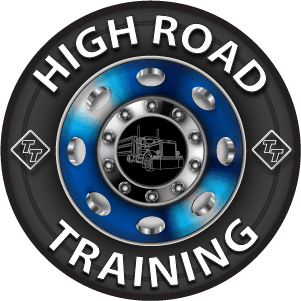Note: Your are not logged in. We can not keep your scores or track your progress unless you Register and Log In
10.4.3 – Recommended Procedures
Each state has laws and regulations governing how school buses must operate at railroad-highway crossings. It is important for you to understand and obey these state laws and regulations. In general, school buses must stop at all crossings, and ensure it is safe before proceeding across the tracks. The specific procedures required in each state vary.
A school bus is one of the safest vehicles on the highway. However, a school bus does not have the slightest edge when involved in a crash with a train. Because of a train’s size and weight, it cannot stop quickly. An emergency escape route does not exist for a train. You can prevent school bus/train crashes by following these recommended procedures:
Approaching the Crossing:
- Slow down, including shifting to a lower gear in a manual transmission bus, and test your brakes.
- Activate hazard lights approximately 200 feet before the crossing. Make sure your intentions are known.
- Scan your surroundings and check for traffic behind you.
- Stay to the right of the roadway, if possible.
- Choose an escape route in the event of a brake failure or problems behind you.
At the Crossing:
- Stop no closer than 15 feet and no farther than 50 feet from the nearest rail, where you have the best view of the tracks.
- Place the transmission in “Park” (if there is no “Park” shift point, use “Neutral”) and set the parking brake.
- Turn off all radios and noisy equipment and silence the passengers.
- Open the service door and driver’s window. Look and listen for an approaching train.
- After you have determined that no train is approaching, close the service door and proceed with caution.
Crossing the Track:
- Check the crossing signals again before proceeding.
- At a multiple-track crossing, stop only before the first set of tracks. When you are sure no train is approaching on any track, proceed across all of the tracks until you have completely cleared them.
- Cross the tracks in a low gear. Do not change gears while crossing.
- If the gate comes down after you have started across, drive through it even if it means you will break the gate.
Multiple-Choice Questions:
Which of the following is the proper procedure when at a railroad crossing in a school bus?
- Open the service door and driver’s window. Look and listen for an approaching train.
- Turn off all radios and noisy equipment and silence the passengers.
- All these are correct
- Place the transmission in “Park” (if there is no “Park” shift point, use “Neutral”) and set the parking brake.
At the crossing:
- Stop no closer than 15 feet and no farther than 50 feet from the nearest rail, where you have the best view of the tracks.
- Place the transmission in “Park” (if there is no “Park” shift point, use “Neutral”) and set the parking brake.
- Turn off all radios and noisy equipment and silence the passengers.
- Open the service door and driver’s window. Look and listen for an approaching train.
- After you have determined that no train is approaching, close the service door and proceed with caution.
When stopping a school bus at a railroad crossing, where should you stop?
- 200 ft before the nearest rail
- No closer than 50 feet and no farther than 100 feet from the nearest rail, where you have the best view of the tracks.
- No closer than 15 feet and no farther than 50 feet from the nearest rail, where you have the best view of the tracks.
- 300 ft before the nearest rail
Approximately how far before a railroad crossing should you activate the school bus hazard lights to warn people you are stopping?
- 500 ft
- 1000 ft
- 50 ft
- 200 ft
Which of the following IS NOT the proper procedure when at a railroad crossing in a school bus?
- If the gate comes down after you have started across, drive through it even if it means you will break the gate.
- At a multiple-track crossing, stop only before the first set of tracks. When you are sure no train is approaching on any track, proceed across all of the tracks until you have completely cleared them.
- Cross the tracks in a low gear. Do not change gears while crossing.
- When crossing a double set of tracks, stop before each set of tracks. Just because you cleared the first set doesn't mean a train isn't coming on the second set
- Check the crossing signals again before proceeding.
- At a multiple-track crossing, stop only before the first set of tracks. When you are sure no train is approaching on any track, proceed across all of the tracks until you have completely cleared them.
- Cross the tracks in a low gear. Do not change gears while crossing.
- If the gate comes down after you have started across, drive through it even if it means you will break the gate.
Complete!
You can Return To The Table Of Contents







 TT On Facebook
TT On Facebook